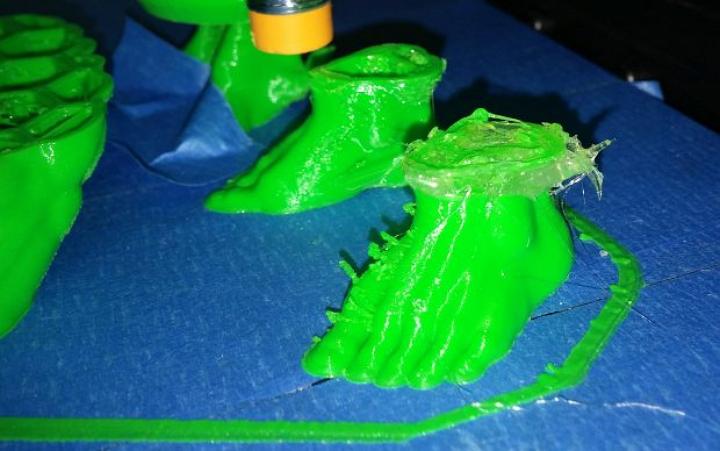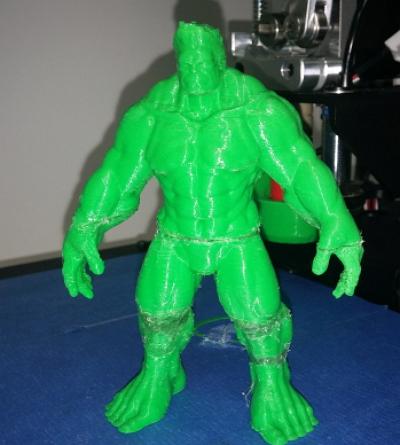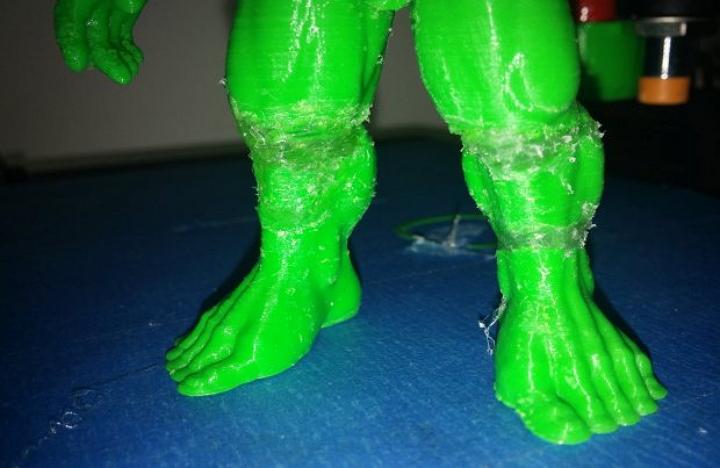 Andrew Terranova, an electrical engineer, writer, and electronics and robotics hobbyist, is an active member of the Let’s Make Robots community. He’s also a 3D printing enthusiast.
Andrew Terranova, an electrical engineer, writer, and electronics and robotics hobbyist, is an active member of the Let’s Make Robots community. He’s also a 3D printing enthusiast.
Terranova has come up with an excellent trick to save a 3D print that turns south during the printing process.
Rather than tossing out the failed print and starting again, Terranova uses hot glue to pull the print back from the brink of disaster.
“One of the first things I printed when I got my 3D printer was a filament spool holder for my Printrbot Simple Metal,” Terranova says. “I was printing on a non-heated bed with PLA, and the print had a large footprint. I prepped the print surface using painter’s tape and rubbing alcohol, and started my print.”
But things got ugly after a good start for him. He says that while the print adhered to the bed at the start of his run, it began to curl and separate from the print bed.
“I didn’t want to scrap it and start over, especially since I really couldn’t do much at the time to improve the situation,” he says. “So I grabbed my hot glue gun and used it to try to secure the print to bed. This kept the lifting from getting worse and coming loose from the table as I feared it might. The hot glue kept the print on the table, and held the separating layers together.”
 While that solution seemed to take care of business initially, several layers later warping of the print caused later layers to separate, so Terranova used more hot glue to fill the gaps where layers were separating.
While that solution seemed to take care of business initially, several layers later warping of the print caused later layers to separate, so Terranova used more hot glue to fill the gaps where layers were separating.
While it may not be an ideal solution for parts that require strong structural integrity, Terranova says this hot glue repair technique works well in situations where a print is losing adhesion to the print bed, layers are separating during printing, or where a gap begins to form between layers caused by a modeling error or slicing problem.
“I’ve searched around on the ‘Net, and haven’t found anyone else using this technique, which really surprises me. I assumed someone else must have figured this out before me,” Terranova says.
He adds that he’d love to see examples of this technique used by other technicians where hot glue was used to repair a print. You can contact him and read a more detailed post on his experience here.
What do you think of Andrew Terranova’s hot glue repair method for 3D prints on the brink of failure? Can you think of any reasons why this technique might not work, or is it a filament-saving gift from above? Let us know in the Hot Glue 3D Printing Fix forum thread on 3DPB.com.
Subscribe to Our Email Newsletter
Stay up-to-date on all the latest news from the 3D printing industry and receive information and offers from third party vendors.
You May Also Like
3D Printing Unpeeled: New Arkema Material for HP, Saddle and Macro MEMS
A new Arkema material for MJF is said to reduce costs per part by up to 25% and have an 85% reusability ratio. HP 3D HR PA 12 S has been...
3D Printing News Briefs, January 20, 2024: FDM, LPBF, Underwater 3D Printer, Racing, & More
We’re starting off with a process certification in today’s 3D Printing News Briefs, and then moving on to research about solute trapping, laser powder bed fusion, and then moving on...
3D Printing Webinar and Event Roundup: December 3, 2023
We’ve got plenty of events and webinars coming up for you this week! Quickparts is having a Manufacturing Roadshow, America Makes is holding a Member Town Hall, Stratafest makes two...
Formnext 2023 Day Three: Slam Dunk
I’m high—high on trade show. I’ve met numerous new faces and reconnected with old friends, creating an absolutely wonderful atmosphere. The excitement is palpable over several emerging developments. The high...































